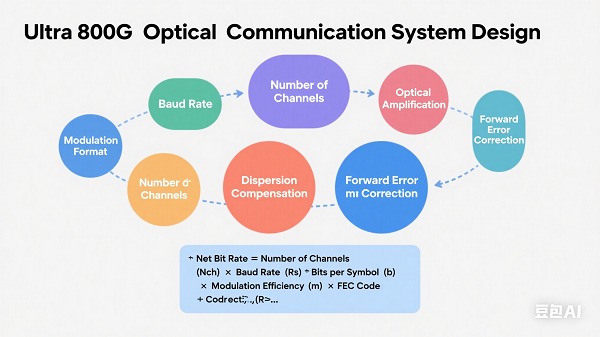May 8,2025, Although there were not many demonstrations of 3.2 Tbps optical transceivers at this year's OFC, there were already numerous demonstrations of 1.6 Tbps transceivers. The technical choices for optical transceivers with speeds above 800 Gbps, such as the debates between coherent and IM - DD, and whether DSP is needed or not, were the themes of multiple technical discussion sessions. The short course SC203, "400, 800 Gbps and beyond optical communications systems: Design and Design Trade - offs", was taught by Ezra Ip from NEC Labs and Dr. Chongjin Xie from Suzhou PhotonixX AI. This article attempts to discuss this hot topic at OFC in combination with the lecture notes of SC203.
Let's start with the methods close to the Shannon limit. The first method is constellation shaping technology, which redesigns the distribution of constellation points of the QAM signal to increase the channel capacity. Keeping the positions of constellation points unchanged while changing the probabilities of some constellation points to make them non - uniformly distributed is called probability shaping (PS). Or making the distances between some constellation points unequal while keeping the probabilities of constellation points unchanged is called geometric shaping (GS). Although the implementation means are different, essentially both shaping methods make the amplitude of the transmitted signal approach the Gaussian distribution, achieving improvements in spectral efficiency, transmission distance, and transmission performance. The second method is forward error correction (FEC), including hard - decision FEC and soft - decision FEC. Fundamentally, both aim to approach the infinitely long coding required to achieve the Shannon limit. Compared with soft - decision FEC, hard - decision FEC has simple decoding and does not require an ADC, but its performance is not as good.
In high - speed optical communication systems, another problem that must be considered is nonlinearity. The SC203 course mentioned several nonlinear models, such as Gaussian Noise (GN), Enhanced GN (EGN), etc. The more complex these models are, the higher their accuracy. There is a need to balance between complexity and accuracy.
In general, the transmission rate of a high - speed optical communication system is comprehensively affected by constellation design, baud rate, code rate, single - carrier or multi - carrier, shaping factor, etc. Each method has its pros and cons. For example, taking the expansion of the number of constellation points as an example, the positive side is that it reduces the demand for DSP, while the negative side is that the required SNR rises exponentially with the spectral efficiency. Looking at increasing the baud rate, the advantage is that it reduces the demand for optical devices, but the disadvantage is that it is limited by the bandwidth of the optical devices themselves. As for increasing the number of carriers, the advantage is straightforward, but the disadvantage is that it will lead to a significant increase in the number of devices. In this regard, the introduction of multi - core fiber may be inevitable.

Beyond algorithms, the performance of the devices themselves is fundamental. Currently, the bandwidth of the highest - level devices is that the I/Q modulator is greater than 50 GHz (Huawei released an EML with a bandwidth of 110 GHz and a rate of 540 Gbps in the PDP session), the driver amplifier is 70 GHz, the DAC is 50 GHz, the balanced PD is 100 GHz, and the ADC is 60 GHz. The gap between the bandwidths of optoelectronic devices and ADC/DAC devices has led to various time - domain and frequency - domain multiplexing technologies. The current state - of - the - art single - channel transmission capacity has reached 2 Tbps, which is the result of comprehensive considerations of constellation, baud rate, FEC, etc.
At this year's OFC, the concept of Coherent - Lite was very popular. The definition given by SC203 is: using large constellations to reduce DSP per bit, using shorter filters at the transmitter DSP for spectral shaping or impairment compensation, using fewer taps for CD compensation, and adopting low - overhead non - iteratitive HD - FEC coding to reduce decoding complexity. Perhaps the proposal of this concept is more attractive to start - up DSP enterprises. Since this year, we have heard about the progress of several domestic DSP companies. In the next year or two, there may be a new round of competition in this field.
Currently, the largest market for optical modules is still within data centers (AI clusters), with a transmission distance of less than 2 kilometers. Although Coherent - Lite may covet part of this market, the main method will still be IM - DD. Besides PAM4, PAM8, SSB (Single side band), DMT (discrete multi - tone), and Kramer - Kronigs Receiver are all new modulation methods.
Compared with previous optical communication systems, the implementation of high - speed optical communication systems has introduced too many new technologies. In the future, the competition in these areas will inevitably place higher demands on optical communication industry players. We still need to work hard.